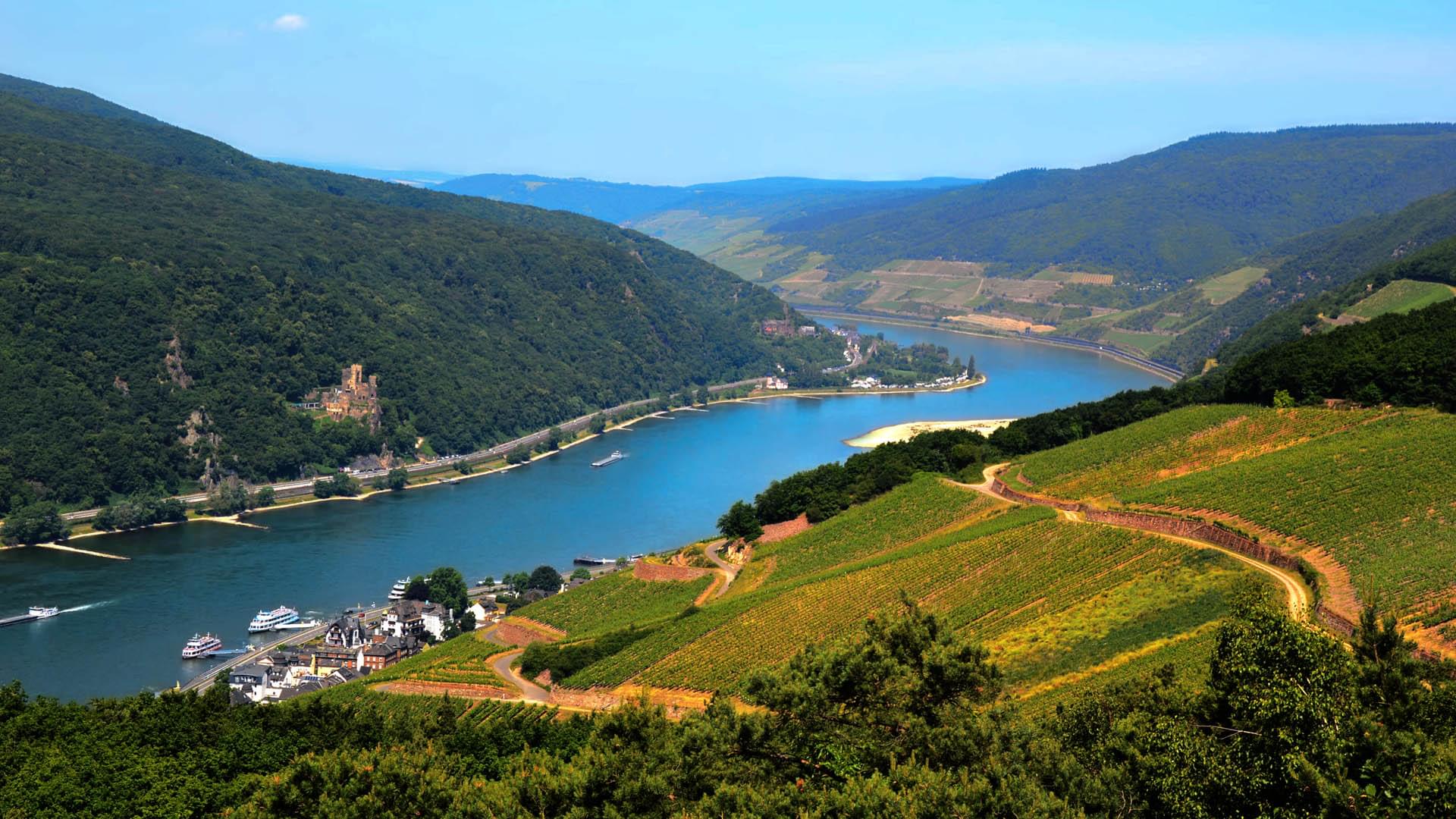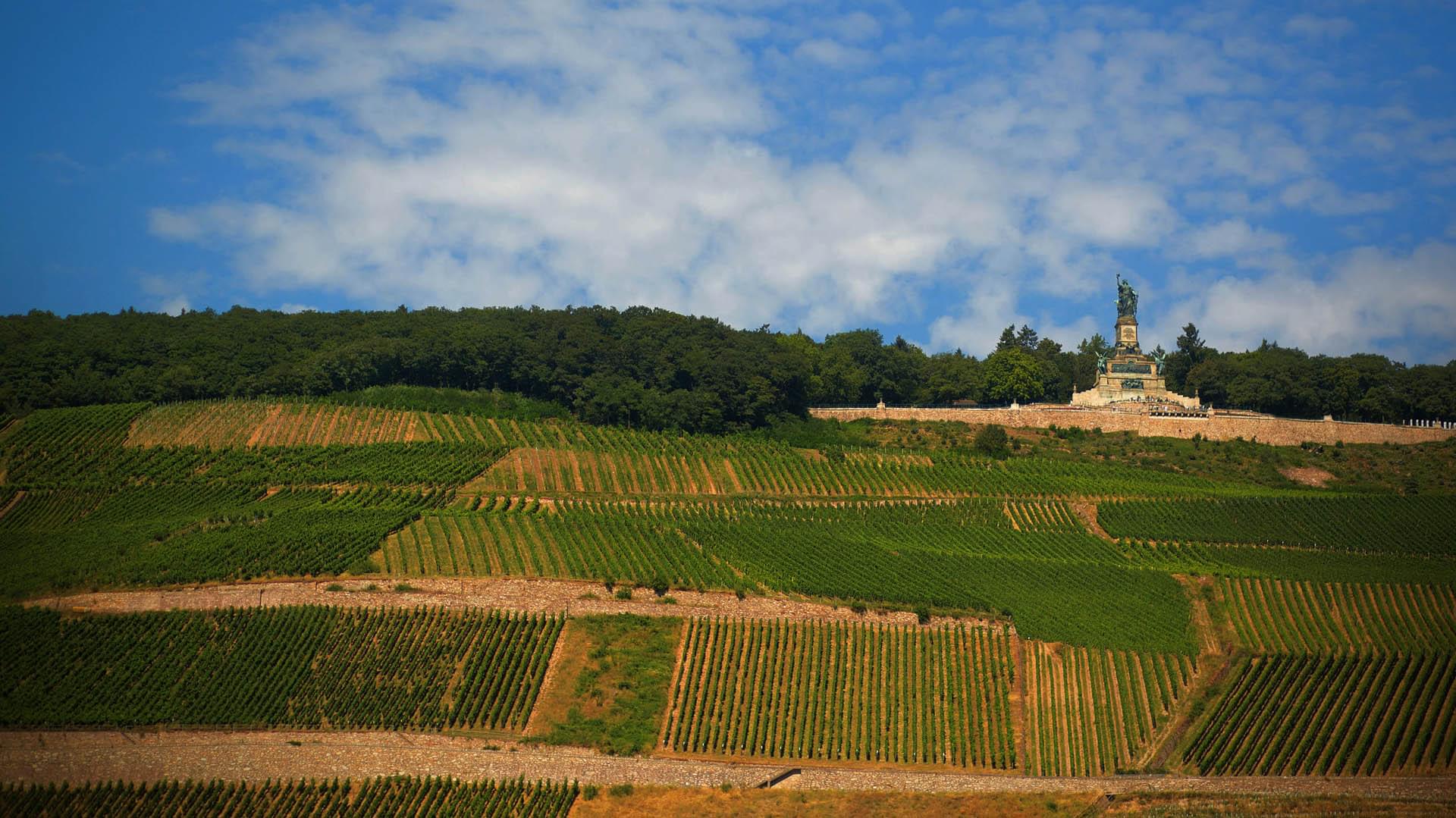Thirty six kilometres of sun
Around the town of Wiesbaden the great river Rhein detours from its northward flow to head west until it reaches Rüdesheim and flows north again. A steep cliffed shore of this crook is faced almost directly south. It is this waterside piece of land spanning about 36 km which gives us the wonderful wines of Rheingau – the smallest of the significant wine regions in Germany.
There are records from the 13th century stating that monasteries and nobles owned vineyards and made wine here. Even now you can see majestic castles and monasteries, surrounded by countless rows of well-groomed vines, on this shore of Rhein. Starting from the 1800s Rieslings become favoured by kings and nobles all over the world. Many of the modern winemakers are families with centuries-old traditions and love of wine.


The Riesling wines have a very aromatic nose, especially when young – flowery, honeyed, citrus and peach fruity. But despite the strong aroma the grapes have, this variety translates the terroir perfectly and changes its character depending on the place it grew.
There are different soils in this region: on the slopes they are rich in quarzite and blue slate, on the bottom levels – in sandy loam and gravel. The fact that the steep shoreline slopes are facing south creates the perfect conditions for cultivating Riesling. The proximity to the river softens the climate, the sun reflects off the water, giving more ripeness to the bunches of grapes.
Despite that, it’s quite hard to grow the grapes on those slopes, as the northern sun doesn’t grant much warmth – and thus the gifts that the land gives to the hardworking vintners are that much more precious.
Riesling forms the basis of winemaking in Rheingau (80%), after it comes Spätburgunder (about 9%) and Müller-Thurgau (4%), and then other, less significant grape varieties.
In 1971 due to the introduction of a new Wine law many weak wines were classified high-quality which damaged the reputation of German Rieslings, including those from Rheingau. But the winemakers of truly phenomenal Riesling did not want to accept this, and in 1992 a group of enthusiasts created their own classification which limited the amount of grapes harvested from one hectar, clearly defined the harvesting area and demanded the production of dry Riesling only. That was how the wines classified as Grosses Gewächs (akin to the French Grand cru system) appeared in Germany. They can be created only on the vineyards designated Grosse Lage. These bottles are only made from brown glass and have a “GG” mark on them. In 1999 this classification was made national.
Every moment in Rheingau you feel glad and full of live. The nature, the wine, the people – everything here makes you smile. Perhaps we had some rainy days during our visit here, but it’s hard to remember it now. The memory holds a bright, pure image of a sunny Rheingau. And the Rieslings made here convey the life force of this region brilliantly. In spring sleep slopes and town streets are filled to the brim with blooming cherries, white and pink, like marshmallows. Bright green fields and vineyards emphasise this beauty. Tulips in different colours and other countless flowers frame the greenery with whimsical strokes. In summer the green prevails over all other colours in Rheingau, but it never fails to lift you up when joined with the azure slate of vineyard slopes, the glimmering of Rhein and bright blue of the sky.
On a warm day it’s wonderful to ride a funicular from the center of Rüdesheim up to the top of the Niederwald ridge in the Rhenish Massif (Rheinisches Schiefergebirge). And there, at the foot of the monumental form of Germany, you can open a bottle of true Riesling.

0 Comments